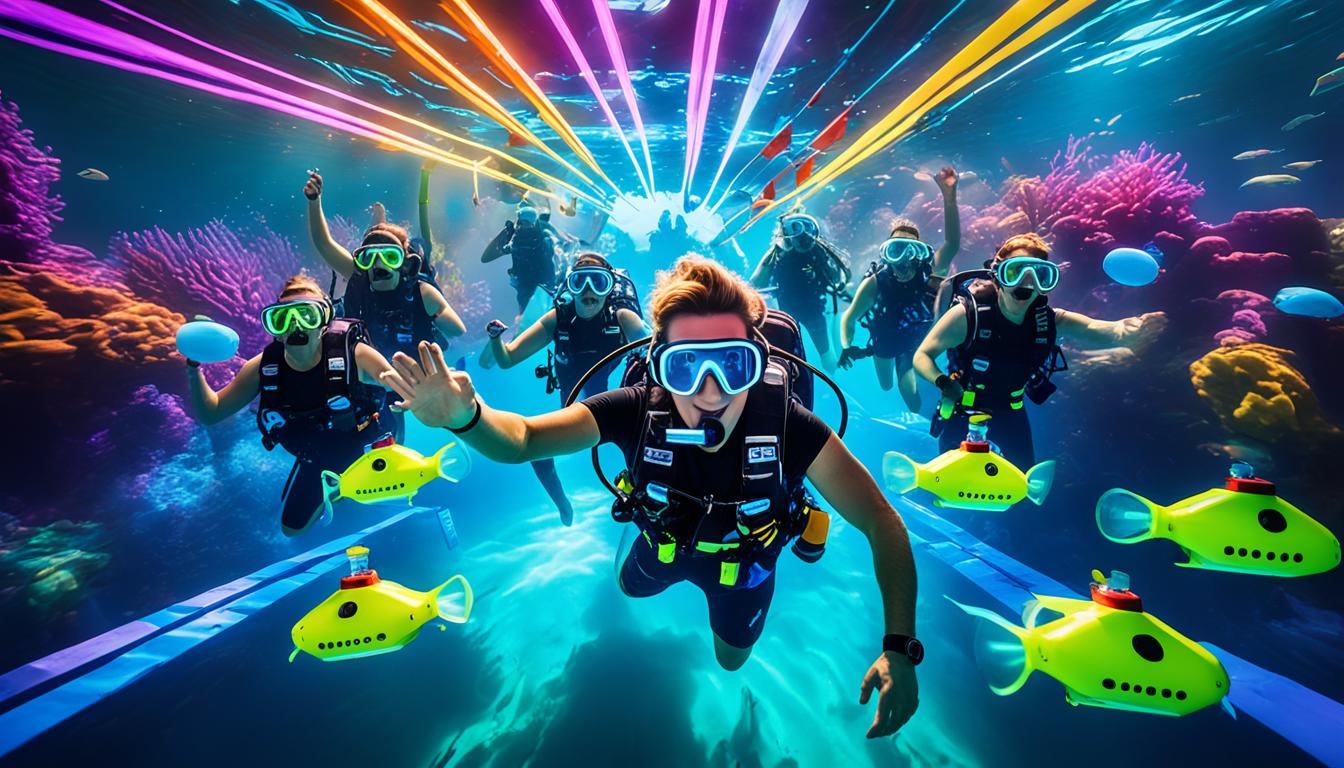As an enthusiast and advisor on boating safety, I understand the importance of ensuring the safety of families and children during boating adventures. Boating can be an exciting and enjoyable activity for the whole family, but it’s essential to prioritize safety to prevent accidents and promote a positive boating experience. In this guide, I will provide helpful suggestions and reasons for practicing boating safety with families and children.
The Importance of Boating Safety
Boating safety is of utmost importance when it comes to family outings on the water. By following safety guidelines, we can protect our loved ones and create lasting memories in a secure environment. Here are some reasons why boating safety should be a top priority:
- Preventing Accidents: Implementing safety measures reduces the risk of accidents and minimizes potential dangers that may arise while boating with children.
- Promoting Responsible Boating Practices: By practicing safety guidelines, we set a positive example for our children, instilling in them the importance of responsible boating practices.
- Educating Children about Safe Boating Habits: Boating safety teaches children valuable lessons about personal responsibility, teamwork, and respect for the water.
- Enjoying Boating Adventures with Peace of Mind: When safety is a priority, families can relax and enjoy their boating experiences without unnecessary worry or stress.
Now, let’s explore some practical steps to ensure the safety of families and children while boating.
1. Planning and Preparation
Proper planning and preparation are key to creating a safe boating environment for your family. Consider the following steps:
1.1 Choosing Suitable Water Bodies
When boating with children, opt for calm lakes or protected bays that are suitable for family outings. These areas offer fewer hazards and are generally safer for boating with children compared to open or unpredictable waters.
1.2 Checking Weather Conditions
Always check the weather forecast before heading out on a boating trip. Avoid boating during storms, high winds, or adverse weather conditions that may pose risks to your family’s safety.
1.3 Creating a Float Plan
Prepare a detailed float plan that includes your trip itinerary, expected return time, and contact information. Share this plan with a trusted person on land, such as a family member or friend. In the event of an emergency, this information will help authorities locate you quickly.
2. Essential Safety Equipment
Equipping your boat with essential safety gear is crucial to handling emergencies and ensuring the well-being of your family. Here are some key items to have on board:
2.1 Personal Floatation Devices (PFDs)
Every person on board, including children, should wear a properly fitted and Coast Guard-approved PFD at all times while on the boat or near the water. PFDs are essential for buoyancy
and can greatly increase the chances of survival in the event of an accident or if someone falls overboard. Ensure that the PFDs are appropriate for the weight and size of each individual, and regularly check them for wear and tear.
2.2 Emergency Signaling Devices
Carry signaling devices such as a whistle, air horn, or signal flares on board. These devices are essential for attracting attention and communicating distress signals if you need assistance.
2.3 First Aid Kit
A well-stocked first aid kit is a must-have on any boat. It should include bandages, antiseptic solution, pain relievers, and any necessary personal medications. Familiarize yourself with the contents of the kit and ensure it is easily accessible in case of an emergency.
2.4 Fire Extinguishers and Smoke Detectors
Install appropriate fire extinguishers and smoke detectors on your boat. Regularly check them to ensure they are in working condition and ready to be used in case of a fire.
2.5 Navigation and Communication Devices
Carry navigation tools such as charts, compasses, and a GPS system to help you navigate safely. These devices are essential for understanding your surroundings and avoiding potential hazards. Additionally, have reliable communication devices such as a marine VHF radio or a fully charged cell phone to communicate with other boaters or call for help if needed.
3. Safe Practices on the Water
Practicing safe habits while on the water is essential for the well-being of your family. By following these guidelines, you can minimize risks and ensure an enjoyable boating experience:
3.1 Wearing PFDs at All Times
Make it a rule for everyone on board, including children, to wear a properly fitted PFD at all times. Set an example by wearing your own PFD and explain to your children the importance of wearing one to stay safe in case of an accident.
3.2 Assigning Roles and Responsibilities
Assign age-appropriate roles and responsibilities to each family member. Designate a lookout to keep an eye on the surroundings, someone to operate the radio, and a first aid responder. This not only ensures that everyone has a role to play but also promotes a sense of responsibility and teamwork.
3.3 Setting Boundaries and Rules
Establish clear boundaries and rules for your children on the boat. Explain areas that are off-limits or potentially dangerous, such as the bow or the area near the motor. Emphasize the importance of staying seated while the boat is in motion and never leaning over the sides.
3.4 Boat Speed and Wake Consideration
Adhere to speed limits and be considerate of other boaters. Slow down near swimming areas, docks, and marinas to prevent accidents and minimize the wake impact on other boats or people in the water.
3.5 Being Mindful of Sun Protection
Protect your family from the harmful effects of the sun by applying sunscreen with a high SPF, wearing protective clothing, and using hats and sunglasses. Take regular breaks in shaded areas and ensure everyone stays hydrated by providing plenty of water and other hydrating beverages.
4. Teaching Children about Boating Safety
Educating your children about boating safety is crucial to their understanding of the risks and how to stay safe on the water. Here are some helpful tips for teaching children about boating safety:
4.1 Encouraging Open Communication
Create an open and supportive environment where children feel comfortable asking questions and expressing their concerns about boating safety. Encourage them to share their thoughts and experiences on the water.
4.2 Demonstrating Safety Practices
Lead by example and demonstrate safety practices to your children. Show them how to wear a PFD properly and explain its role in keeping them safe. Teach them the proper way to board the boat, move around, and respond to emergencies.
4.3 Explaining Boat Functions and Equipment
Take the time to explain the basic functions of the boat to your children. Teach them about steering, starting, and stopping the boat. Show them where the safety equipment is stored and explain how to use it.
4.4 Practicing Emergency Scenarios
Conduct drills and practice emergency scenarios with your children. Teach them what to do if someone falls overboard, including how to throw a flotation device and how to maneuver the boat safely to rescue them. Make these drills a fun and engaging activity to ensure that your children remember the procedures.
5. Emergency Preparedness
Even with careful planning and precautions, emergencies can still occur. Being prepared for such situations can make a significant difference. Here are some important aspects of emergency preparedness:
5.1 Man Overboard Procedures
Teach your family members how to react if someone falls overboard. Ensure they know how to initiate rescue procedures, including throwing flotation devices, maneuvering the boat safely, and calling for help.
5.2 Emergency Communication and Distress Signals
Familiarize yourself and your family with emergency communication procedures. Teach your children how to use whistle blasts or flare signals to attract attention and signal for help. Make sure they understand the importance of using these signals only in emergencies.
5.3 Basic First Aid Training
Consider taking a basic first aid and CPR course to equip yourself with life-saving skills. Knowledge
of basic first aid techniques can prove invaluable in case of accidents or medical emergencies on board. By being prepared to handle injuries or medical conditions, you can provide immediate assistance to your family members and potentially prevent further harm.
5.4 Staying Calm and Reassuring Children
In emergency situations, it is important to remain calm and reassure your children. Explain the situation calmly and implement the emergency protocols that you have practiced. Reassure them that you are there to keep them safe and that help is on the way if needed. Your calm and composed demeanor will help your children feel more secure and confident during challenging times.
Conclusion
Boating safety for families and children is a paramount concern to ensure enjoyable and secure experiences on the water. By planning and preparing for each trip, equipping your boat with essential safety gear, practicing safe habits, teaching children about boating safety, and being prepared for emergencies, you create an environment where your family can have fun while staying safe. Prioritizing safety allows you to fully cherish the moments spent on the water with your loved ones, knowing that you have taken all necessary precautions to protect them.
FAQs
- What should I do if my child is afraid of boating?
- If your child is afraid of boating, take it slow and introduce them to the water gradually. Start with short trips in calm waters and gradually increase the duration and complexity of the boating adventures as their confidence grows. Encourage open communication and address their fears by explaining safety measures and ensuring their comfort and well-being.
- Are there any age restrictions for children on boats?
- Age restrictions for children on boats vary depending on local laws and regulations. Some jurisdictions require children to wear PFDs at all times, regardless of age, while others may have specific age limits for operating certain types of watercraft. It is important to familiarize yourself with the boating laws and regulations of your area to ensure compliance.
- Can infants and toddlers go boating?
- Infants and toddlers can go boating, but it is essential to take extra precautions to ensure their safety. It is advisable to have them wear appropriately sized PFDs at all times and provide a safe and secure environment on board. Consider their comfort, protection from the sun, and potential hazards, such as sharp corners or open areas on the boat.
- Is it necessary for adults to undergo boating safety courses?
- While it may not be mandatory for adults to undergo boating safety courses in all jurisdictions, it is highly recommended. Boating safety courses provide valuable knowledge and skills that can enhance your understanding of safe boating practices, emergency procedures, navigation rules, and the use of safety equipment. Continuous learning and education can significantly contribute to ensuring the safety of your family on the water.
- What is the best way to teach children about the dangers of boating without scaring them?
- The best way to teach children about the dangers of boating is through open communication, age-appropriate explanations, and positive reinforcement of safe practices. Focus on the importance of following rules, wearing PFDs, and practicing good boating habits. Encourage their curiosity and address their concerns, while emphasizing that these safety measures are in place to protect them and ensure enjoyable boating experiences.







3 responses
[…] Safety Equipment and Inspections: Ensure that your vessel is equipped with the necessary safety equipment, such as […]
[…] compromise on safety. Always wear properly fitted, Coast Guard-approved life jackets during boat tubing activities. Make […]
[…] the open water! As an avid boater, I’ve learned that having the right boat accessories and safety equipment can make all the difference in ensuring a safe and enjoyable voyage. In this article, I’ll […]